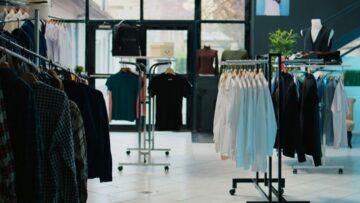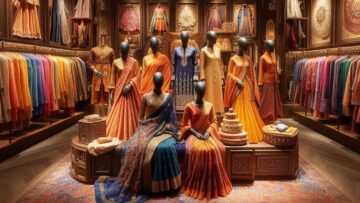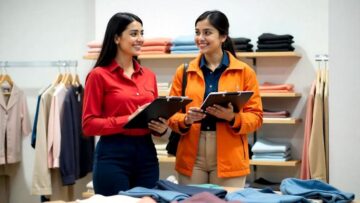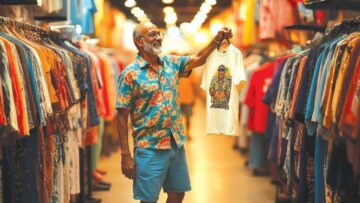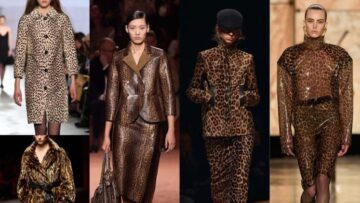
A majority of the world has gone back to office, but the work environment has changed for ever and it’s not only about how we work but also how we dress. After spending more than a year working from home, it’s not only about how and where from we work it’s also about how we dress for the occasion and that is what has given rise to workleisure, the perfect blend of athleisure and workwear. The demand for less restrictive clothing in office had already given rise to concepts like ‘Casual Fridays’ and ‘Business Casual’. Workleisure legitimates comfort clothing in offices. This emerging trend brings athleisure, often seen as workout clothes that can also be worn to the coffee shop or intimate friendly gatherings, into the workplace.
Brands that specialised in comfort clothing have seen exceptional sales in the last 2 years. True Fit’s Fashion Genome, based on first-hand data from 17,000 brands and 180 million shares that athleisure orders jumped 84 per cent since the start of the pandemic. American retailer Target reportedly reached US $ 1 billion in sales for its activewear line, Lululemon saw an 88 per cent increase in sales in the first quarter of 2021, while Under Armour reported a 35 per cent year-over-year increase in 2020. These are only a few of the noteworthy sales figures, but for sure, all retailers/brands offering the segment have seen significant growth.
Demand for comfort continues into workwear
Significantly, a survey by Nordstrom shows that 41 percent of respondents plan to dress comfortably for the rest of their life, while there has been a 165 percent spike in online searches for work clothes on nordstrom.com as offices begin to go offline. Another survey from Cotton Incorporated, claims that the number of consumers who say they’re primarily shopping for comfort increased from 63 per cent in 2020 to 74 per cent in 2021. In early July 2021, Stitch Fix, an online personal styling service in the United States and United Kingdom, reported that searches for comfortable but office-appropriate clothes like jumpsuits and rompers were up by 60 per cent, while leggings and loungewear were down by a corresponding 60 per cent. The survey also indicated that 44 per cent of respondents believe that loungewear will continue to inform their future professional wardrobes, with hoodies and elasticated waists in particular holding a permanent place in our work attire.
According to Erin Schmidt, a Senior Analyst at Coresight Research, a global advisory and research firm specialising in retail and technology, “The workwear category is diminishing, in fact it’s not really a category anymore. It used to be a suit Monday through Thursday, and then casual Friday, and these were clearly defined.” He adds, “The consumer today is reinventing what that means, rewriting the definition of workwear. And it might be a little while for employers to figure this out.” Occupying that literal comfort spot between work attire and leisurewear, workleisure’s moment has arrived. And there’s a slew of brands ready to fulfil the need for soft, stretchy and simple work-friendly attire.
The reality is that brands are going back to officewear, but adding more stretch to their pants to be in line with the demand for workleisure. “Not surprisingly, consumers are looking for something which is work-friendly and at the same time comfortable as well. That’s how this term ‘workleisure’ is becoming an important topic of discussion in fashion industry,” avers Arjun Puri, Director at KAS Group Asia. Stores are full of yoga pants that look like dress pants, T-shirts can be worn to work and a dressier version of cork-lined sandals dubbed the ‘Work Birk’. And interestingly, the convergence of officewear with comfortwear, is happening from both directions, as activewear brands are strengthening their offerings in office-ready styles, while traditional fashion brands are also launching active lines.
Brands and retailers add workleisure to their offerings
Many of the leading fashion brands around the world have launched new collections for the back-to-work season that reflect the changed mindset of people going back to work, but not back to formal crisp officewear. Department store El Corte Ingles, a household name in Spain, said demand for comfortable officewear surged over the summer, accelerating in September as clients returned to offices and business meetings. Retailers such as Zara, Mango and H&M are highlighting ‘smart casual’ trousers, shirts and dresses on their websites, alongside loungewear and sportswear which lockdowns made ubiquitous.
A hardcore sportswear brand like Adidas has been branching out from activewear. In June, the company announced a global expansion into underwear and lingerie — not active undergarments like sports bras, but traditional underwear and bras made from cotton, without the sporty edge that Adidas is known for. The fabric being used are technical, but their focus is on making it look like a regular everyday bra, something women can wear all the time, including to work. Meanwhile, Telfar, the brand know for classy genderless fashion is launching a sport line in September, while Pangaia, a brand that creates high-end products with smart technology and sustainable inputs launched a gym line at the end of June.
In its spring trends guide, Nordstrom described Work Leisure Essentials as, “Evolution for the work-from-home wardrobe focusing on comfort and versatility. Leisure-inspired pieces and elevated everyday essentials in calming neutrals keep this trend sophisticated and refined.” According to Ben Checketts, Co-founder and Creative Director of DTC activewear brand Rhone, “The key to maintaining momentum has been to focus on multi-use products that give people the comfort they’ve come to expect during COVID-19, but in silhouettes that are office-friendly.”
With a concerted effort by retailers/brands to bring more relaxed styling to the workplace, a debate has ensued about what’s appropriate to wear to work within the workleisure domain, but the trend is here to stay, believes Sanjay Shukla at Triburg. “Boundaries between ‘work-time’ and ‘leisure-time’ have merged. This is reflected in the way corporates are dressing up or may I say dressing down. Today, a Henley shirt at work is as acceptable as a Polo used to be. Elasticated hem bottoms (loosely known as joggers) are being preferred over standard chinos.” He adds that women do not think twice before wearing shackets to work and Ponte knit pants are in most wardrobes today. “Truly, fashion is a reflection of the times we live in and the way we respond to the macro environment,” he reasons.
Rakhi Handa, who was Senior Managing Director, Product Safety & Quality Assurance at Target, responsible for Indian sub-continent, Indonesia and Global Raw Material Assurance till March earlier this year and is now Consulting with international businesses looking to explore the India both as a source base and a potential market candidly shares that athleisure trends have been on an uptick since very early in the pandemic – possibly as early as May 2020, we already saw that retailers in the US, particularly big box retailers were revisiting and re-aligning buying patterns to cater to this new demand. “I think this has brought a change in trends that are definitely influenced by a more ‘casual’ approach to work attire. This is definitely noticeable in buying trends and reflected in the type of products that are being sourced not just globally, but from India as well.”
Has Indian manufacturing industry picked up the trend?
The Indian export industry has noticed the trend, but not all are geared to offer the required product. While retailers have definitely started bringing these workleisure pieces as important part of the collection, buyers in India feel that exports here have still to pick up the direction. “As Indian market is still cotton dominant from export perspective, it will take some time to build this category as it involves more fabric blends like cotton/poly/viscose, poly/viscose, bamboo, modal etc., however this is certainly picking up,” says Arjun. He adds that attire suitable for transition from work to social evening is also definitely one that has been gathering impetus for a while now. But more a general direction rather that some big thing that is happening this specific buying season. “India products are not very strong in this category but the good vendors are definitely aware,” he shares. Rakhi concludes the discussion with an honest observation, “A lot of the design sourced from India are retailer/brand driven and therefore manufacturers tend to be trend followers than trend setters. While manufacturers across the globe have been quicker to recognise the trend and capitalise on it accordingly, I feel Indian manufacturers are following.”


